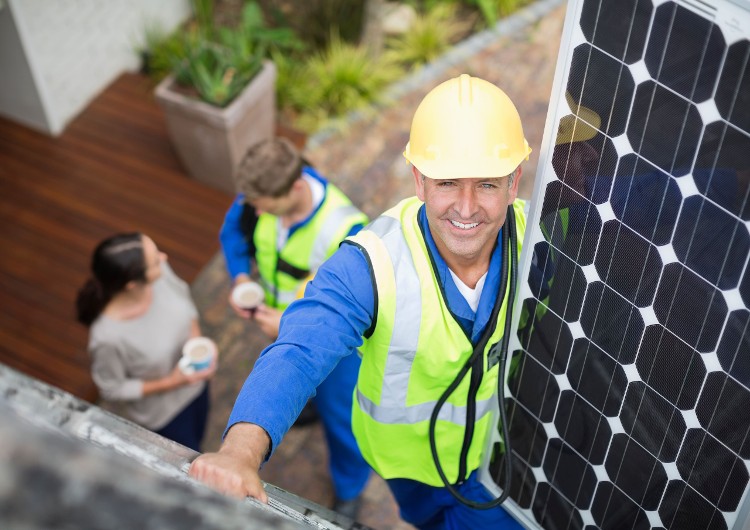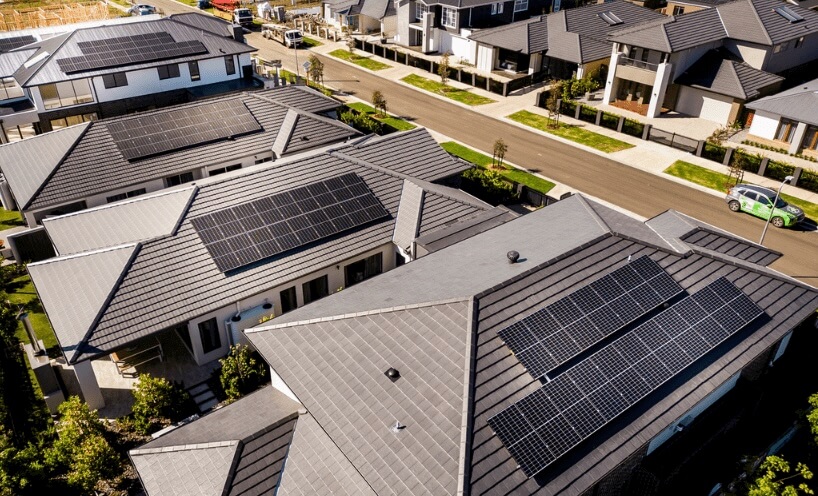Last update August 16th, 2024 at 04:48 pm
In 2024, the demand for solar energy in Australia continues to grow, driven by rising electricity costs and an increasing awareness of environmental issues. As more Australians consider going solar, understanding the installation costs becomes crucial. This guide breaks down the factors influencing costs, the average prices in 2024, and ways to maximise your investment in solar energy.

Factors Affecting Solar Panel Installation Costs
1. System Size
The size of the solar panel system remains the most significant factor affecting the installation cost. Larger systems, like a 15kW setup, generate more electricity but also come with a higher price tag. However, a larger system can offer greater long-term savings, especially for households with high energy consumption.
2. Type and Quality of Solar Panels
Not all solar panels are created equal. High-efficiency panels from premium brands like SunPower cost more upfront but offer better performance and durability. In contrast, budget-friendly panels may save money initially but could lead to higher maintenance costs or reduced energy output over time.
3. Inverter Technology
Inverters convert the DC electricity generated by solar panels into AC electricity used in homes. The type of inverter you choose—string, micro, or hybrid—significantly impacts the overall cost. Microinverters, though more expensive, offer better system performance, especially for installations where shading or complex roof angles are factors.
- String inverters: the most common choice, range from $1,000 to $2,500, offering a budget-friendly option for straightforward installations.
- Microinverters: known for their superior performance in shaded or complex setups cost between $200 and $300 per unit, with one unit required per solar panel.
- Hybrid inverters: which combine solar and battery storage capabilities, typically range from $2,000 to $4,500, depending on capacity and features.
4. Installation Complexity
The complexity of the installation plays a significant role in determining costs. Factors like roof type, pitch, and accessibility can increase labour costs. For instance, a steep or multi-story roof requires more safety measures and time, leading to higher installation expenses. Additionally, rural installations might incur extra charges due to the travel required for installers.
5. Location and Government Incentives
Your location in Australia affects both the cost and the incentives available. For instance, areas with more sunlight can opt for smaller systems, reducing costs. Moreover, government incentives, such as the Small-scale Renewable Energy Scheme (SRES), can significantly lower installation costs. In 2024, the value of Small-scale Technology Certificates (STCs) continues to fluctuate, so staying informed is essential to maximise savings. The STC Solar Calculator can be used to estimate the number of STCs that you are eligible for.

Average Costs of Solar Panel Installation in Australia
Understanding the average cost of solar panel installations in 2024 helps you budget effectively. For a typical 6.6kW system, homeowners can expect to pay between $4,000 and $8,000 after applying STC discounts. This price range includes both the cost of panels and installation.
Here’s a breakdown of average costs based on system size:
- 3kW System: $3,000 – $5,500
- 5kW System: $3,500 – $7,500
- 6.6kW System: $4,000 – $8,000
- 10kW System: $5,000 – $12,500
While these prices provide a general guide, actual costs can vary based on the factors mentioned earlier. However, they provide a good starting point for budgeting your solar investment. For example, premium panels or complex installations will push costs toward the higher end of the spectrum.
Long-term Savings and Return on Investment
Solar panels represent a significant upfront investment, but the long-term savings can be substantial. In 2024, the average Australian household with a 6.6kW system can save between $1,300 and $2,100 annually on electricity bills. Over 25 years, this translates to total savings of $32,500 to $52,500. Please keep in mind the amount saved per year is dependent on so many factors such as whether you consume electricity during daylight hours, your feed-in tariff, your imported electricity price, and your location. shading, panel orientation and tilt. It is always best to consult a professional for a more accurate estimation tailored to your circumstances.
The return on investment (ROI) for solar panels typically occurs within 3 to 6 years, depending on the system size, location, and electricity consumption. With rising energy costs, the payback period could be even shorter, making solar an attractive option for homeowners looking to reduce their energy expenses. As mentioned, your payback and ROI is a multivariant and it is always best to consult a professional for a more accurate estimation of your unique circumstances.
Tips for Reducing Installation Costs
Reducing the cost of solar installation in 2024 is possible with careful planning and strategic decisions. Here are some tips to help you save:
1. Compare Multiple Quotes
Prices can vary significantly between installers, so obtaining multiple quotes is essential. Comparing offers allows you to find the best deal and negotiate terms that work in your favour.
2. Maximise Government Incentives
Take full advantage of available rebates and incentives. The STC scheme remains a valuable tool for reducing upfront costs. Additionally, check for any state-specific rebates or interest-free loans that might be available in 2024.
3. Consider a Smaller System
If your budget is tight, start with a smaller system. You can expand the system later as your energy needs grow or as your budget allows.
4. Opt for Standard Installation
Choosing a standard installation on a simple roof can keep labour costs down. Complex installations often incur additional charges, so simplifying the installation process can lead to savings.
The Future of Solar in Australia
The future of solar energy in Australia looks bright. As technology advances and the cost of solar panels continues to decrease, more Australians are expected to adopt solar power. In 2024, solar panel efficiency is higher than ever, and new battery storage options are making it easier for homeowners to go off-grid or reduce reliance on the grid.
Investing in solar panels not only provides immediate financial benefits but also contributes to a sustainable future. By generating clean energy, you reduce your carbon footprint and help combat climate change. As more homes and businesses in Australia switch to solar, the nation moves closer to its renewable energy goals.
Conclusion
Solar panel installation in Australia is a smart investment, offering significant long-term savings and environmental benefits. While the upfront cost may vary depending on several factors, government incentives and careful planning can make solar power accessible to most homeowners. By understanding the costs involved and exploring ways to reduce them, you can make an informed decision and enjoy the benefits of solar energy for years to come.
In summary, investing in solar panels not only lowers your electricity bills but also contributes to a sustainable future. So, if you’re considering going solar, now is the perfect time to take the plunge and start enjoying the advantages of renewable energy.